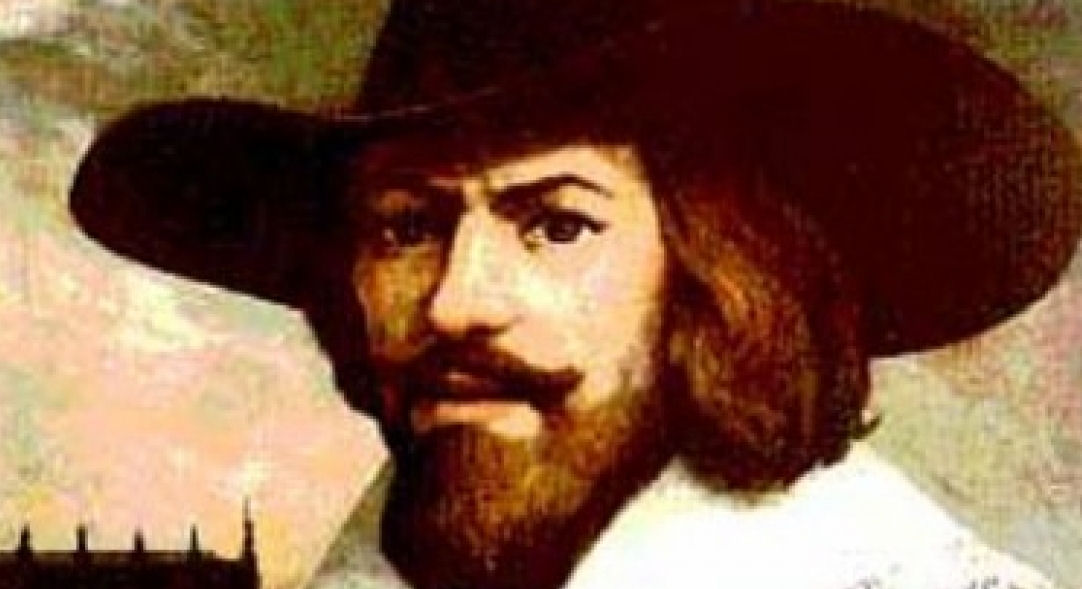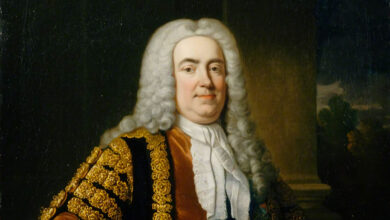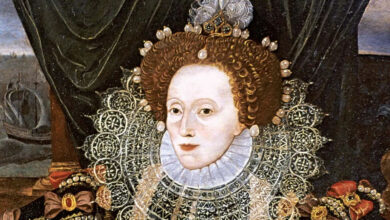
A desperate disease requires a dangerous remedy.” – Guy Fawkes
Podcast: Play in new window | Download
Subscribe: Spotify | Amazon Music | Youtube Music | RSS
Guy Fawkes Biography
Guy Fawkes was born on 13 April 1570 in Stonegate, which is in York, in the North of England. His parents were a proctor called Edward Fawkes and Edith, a recusant Catholic. His great-grandfather on his father’s side of the family was Lord Mayor of York in the 1530’s.
He also had three siblings, a sister called Anne, who had been born in 1568 but had died only a few weeks later, and two more sisters, both younger than Guy, one called Anne born in 1572 and the other called Elizabeth born in 1575.
The date given for his birth above is a bit of a guesstimate as it is not actually known on what date he was born. However, there are baptism records from the church of St. Michael le Belfrey showing that he was baptised on 16 April. At the time, it was customary to wait three days from the birth of a child before the baptism was performed.
Edward, Guy’s father, died when he was only eight years old and several years later, his mother remarried to a Catholic called Dionis Baynbridge who came from Scotton, near Harrogate. Guy attended St. Peter’s School in York and both of these things seem to have cemented Guy’s Catholic faith, which at the time was a dangerous thing due to Elizabeth I, who was Queen of England between 1533 and 1603, continuing her father, King Henry VIII’s legacy of turning England into a Protestant state. There were severe punishments for those who continued to practice Catholicism.
After leaving school, Guy Fawkes became a servant in the household of the 1st Viscount Montagu, Anthony Browne. The Viscount didn’t like Fawkes and eventually dismissed him, but upon the Viscount’s death, he was re-employed by his grandson, the eighteen-year-old 2nd Viscount Montagu, Anthony-Maria. Some sources claim that Guy Fawkes married around this time and had a son, but this has not been verified.
Upon his father’s death, Guy Fawkes had inherited an estate in Clifton, York, but in October 1591 he sold it and travelled to join the Catholic Spanish army to fight against the Dutch Republic in what became known as the Eighty Years War. He also fought in France between 1595 and 1598. By joining the Spanish, Guy was also effectively fighting against England as the two countries were still at war. The Spanish Armada was in the past, but only by a few years and tensions were still high. Fawkes became a junior officer under Sir William Stanley, who had at one time been highly regarded by Queen Elizabeth, but who had now switched sides to fight for Catholic Spain. By 1603, the year Elizabeth died, Fawkes had been recommended for captaincy and travelled to Spain to try and gain support for a Catholic rebellion in England. At the same time he started to use the Italian version of his first name, Guido. He denounced James I, who had taken over England’s throne from Elizabeth as a heretic and also denounced Scotland and all of the King’s favourite noblemen. Philip III of Spain received Guido at court, but support for the rebellion was not forthcoming.
In 1604, a group of English Catholics led by a man called Robert Catesby had planned to assassinate King James I in order to replace him, with his daughter, the Princess Elizabeth. Guy Fawkes joined the group and their first meeting took place on Sunday 20 May 1604 at an inn called the Duck & Drake in London. The group had already talked about the possibility of blowing up parliament with gunpowder and it was felt that the addition of Fawkes would be a welcome one due to his wartime experience and also due to the fact that he had been away from England for so long, he was not known to anyone.
One of the members of the group, Thomas Percy had managed to secure promotion from his employer who happened to be Keeper of the King’s Wardrobe, and gained access to a house in London, where Guy Fawkes was made caretaker, and servant to Percy, using the pseudonym John Johnson. The conspirators discovered that a local widow was clearing out an undercroft, and that the space, which the group arranged to purchase the lease for, would be perfect for their purposes as it was located directly beneath the House of Lords. Twenty barrels of gunpowder were brought in at first and this was followed by sixteen more on 20 July with the plan being to blow up parliament on opening day. However, the plan had to be delayed as the threat of Plague in the city had delayed the opening of parliament until Tuesday 5 November.
In August 1605, it was discovered that the gunpowder being stored in the undercroft had decayed and so more was brought in. The group of plotters continued to meet and it was determined that Guy Fawkes would play the crucial role in the plot of lighting the fuse, after which it was intended that he would escape across the River Thames.
Things started to unravel for the plotters when some of them became worried about the fate of a few Catholics who would be attending the opening of parliament. An anonymous letter was sent to Lord Monteagle on 26 October warning him to stay away from the ceremony. The plotters heard that the letter had been considered to be a hoax and so they decided to continue with their plans not knowing that Lord Monteagle had taken the letter more seriously than they thought and had shown it to the King. The King ordered a search of the cellars to be conducted by Sir Thomas Knyvet which was conducted in the early hours of 5 November. Guy Fawkes was discovered leaving the cellar and was arrested. The barrels of gunpowder were found hidden behind piles of firewood and so the plot was foiled.
The following day, King James ordered that the defiant John Johnson as Fawkes had identified himself as, to be tortured in order to discover the identities of his co-conspirators and so Fawkes was transferred to the Tower of London.
As the torture became progressively worse, Fawkes eventually gave up his true identity on 7 November and also revealed there to be five conspirators the names of whom he started to reveal on 8 November along with their intention to install Princess Elizabeth on the throne. By 9 November, the interrogators, led by Sir William Waad, Lieutenant of the Tower, had extracted a full and signed confession from Guy Fawkes.
The trial of the eight men accused of the Gunpowder plot began on Monday 27 January 1606 at Westminster Hall and was watched in secret by the King and his close family. All of the defendants were found guilty by the jury of high treason. Guy Fawkes along with all of his co-conspirators were hanged, drawn and quartered with various body parts being distributed to the four corners of the Kingdom as a warning to other potential traitors.
Podcast: Play in new window | Download
Subscribe: Spotify | Amazon Music | Youtube Music | RSS




